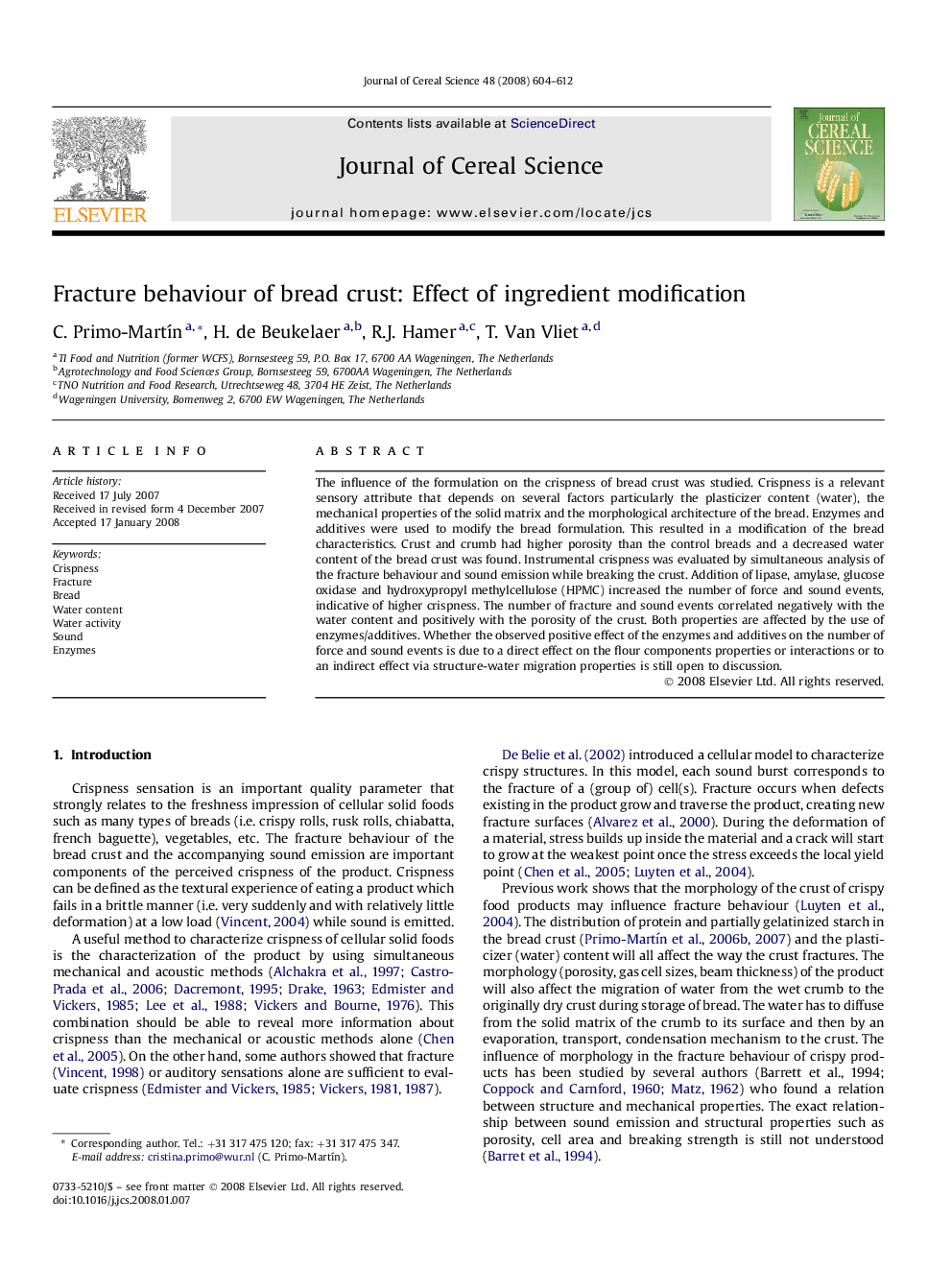| Article ID | Journal | Published Year | Pages | File Type |
|---|---|---|---|---|
| 4516406 | Journal of Cereal Science | 2008 | 9 Pages |
The influence of the formulation on the crispness of bread crust was studied. Crispness is a relevant sensory attribute that depends on several factors particularly the plasticizer content (water), the mechanical properties of the solid matrix and the morphological architecture of the bread. Enzymes and additives were used to modify the bread formulation. This resulted in a modification of the bread characteristics. Crust and crumb had higher porosity than the control breads and a decreased water content of the bread crust was found. Instrumental crispness was evaluated by simultaneous analysis of the fracture behaviour and sound emission while breaking the crust. Addition of lipase, amylase, glucose oxidase and hydroxypropyl methylcellulose (HPMC) increased the number of force and sound events, indicative of higher crispness. The number of fracture and sound events correlated negatively with the water content and positively with the porosity of the crust. Both properties are affected by the use of enzymes/additives. Whether the observed positive effect of the enzymes and additives on the number of force and sound events is due to a direct effect on the flour components properties or interactions or to an indirect effect via structure-water migration properties is still open to discussion.
